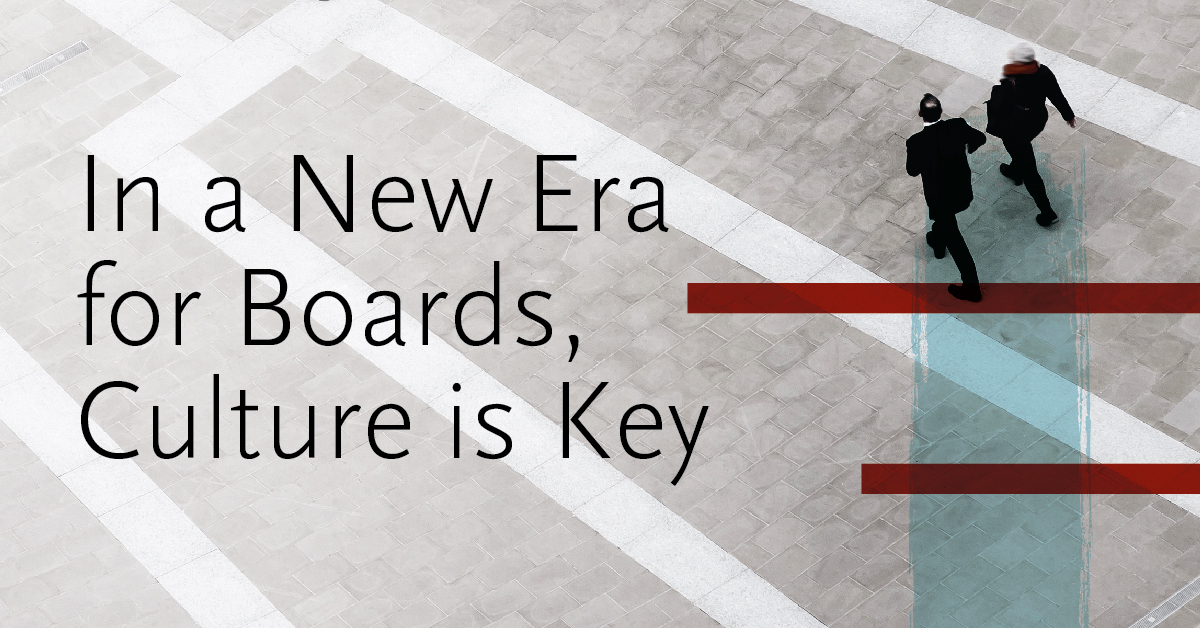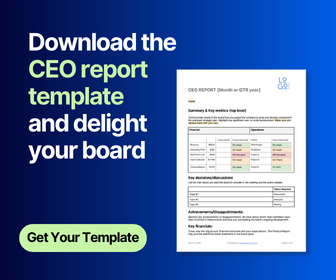Achieving high-performance boards
Strategies for Success
According to the KPMG Audit Committee Institute, Global Boardroom Insights, the barrier most frequently cited by survey respondents when building a great Board was "finding directors with both general business experience and specific expertise needed by the company" (69%). Identifying the Board's future talent needs ranked second (55%), followed by resistance to change due to "status quo" thinking (43%). The two key challenges, however, are aligning Board talent with the company's strategy (75%) and Board composition, where 61% feel the need for greater diversity of viewpoints and backgrounds.
With that, the purpose statement and culture constitute the driving mechanisms for success.
As high-performance Boards are the driving force behind successful organisations, ensuring that they stay on track to achieve their strategic goals. It is essential for Board members to apply good practices in the realm of governance to create and maintain a top-notch Board.
In this BoardPro article, we look into the key factors that contribute to Board effectiveness, including utilising vision and purpose statements to guide decision-making processes. On top of this, we will explore ways to encourage open communication channels among Board members by creating platforms for honest discussion while addressing potential barriers.
Evaluating Board performance regularly ensures a constant focus on improvement and helps maintain high-performance Boards over time. So keep reading to get a rundown of how to achieve excellence at the Board level.
Utilising vision and purpose statements
Implementing vision, purpose, or mission statements in all aspects of a company's operations is crucial for creating high-performing Boards. Regularly using these statements as guiding principles can lead to more focused decision-making processes and align the Board with the organisation's long-term goals.
But how can you integrate vision statements into Board discussions and align decisions with the company's core values to contribute to a high-performing team?
What is the best framework?
According to a 2022 EY study authored by two representatives of the Center for Board Matters, there are two key pillars of Board efficiency: Board mission and engagement model. The latter is heavily influenced by the application of the first. The mission drives the strategy, the financial performance, the long-term corporate value, and stakeholder engagement. Having a clear mission renders both insight and oversight on issues that are mission-critical. This cannot be achieved without spotless de facto leadership values and an executive ability to communicate, empower and inspire. The mission is guided by its leaders and implementers.
Steve Bowman, the managing director at Conscious Governance, highlights how  important a mission is. "It is either your vision or your purpose statement or your mission statement, whatever you want to call it, which you can start to use shamelessly in everything that you do. You have it on your Board agenda and the directors are reminded to use that before they frame a question or before they ask a comment. And the reporting coming up to the Board should answer that how is this going to affect our vision or our purpose. One of the best future casting tools that you've got is actually making use of your vision to help lead conversations regularly and shamelessly."
important a mission is. "It is either your vision or your purpose statement or your mission statement, whatever you want to call it, which you can start to use shamelessly in everything that you do. You have it on your Board agenda and the directors are reminded to use that before they frame a question or before they ask a comment. And the reporting coming up to the Board should answer that how is this going to affect our vision or our purpose. One of the best future casting tools that you've got is actually making use of your vision to help lead conversations regularly and shamelessly."
By starting each meeting with a review of these guiding principles, members are reminded of their shared commitment to achieving specific outcomes. This approach ensures that every discussion stays on track and focuses on topics relevant to realising the stated goals.
- Create an agenda item dedicated solely to reviewing your company's vision statement at each meeting.
- Prioritise strategic discussions that directly relate to advancing your organisation towards its desired future state.
- Foster open dialogue around potential challenges or opportunities tied explicitly to fulfilling your mission statement.
But "How do we create the culture?” Steven Bowman says there are four guidelines: "by mindset, behaviours, symbols, policies and processes behind that."
Maintaining alignment between Board decisions and an organisation's core values is essential for fostering trust among stakeholders such as employees, customers, investors, regulators, etc. When making critical choices about business direction or resource allocation during meetings, consider whether they adhere closely enough to your organisation's fundamental principles. Consistency in Board conduct and a transparent indication of its values can be achieved by adhering to the core principles.
- Develop a decision-making framework based on your company's core values, which can be used as a reference during meetings.
- Encourage members to ask questions or raise concerns if they feel any proposed action may not align with these guiding principles.
- Regularly review past decisions to assess their alignment with organisational values and make adjustments as needed.
Incorporating vision statements into Board discussions and ensuring all decisions align with the company's core values are essential steps toward building high-performing Boards. By staying focused on long-term goals and maintaining consistency in actions, organisations can foster trust among stakeholders while driving strategic growth initiatives forward effectively. By understanding the importance of utilising vision and purpose statements, Boards can ensure that their decisions are in line with company values. Moving forward, it is important to assess the current Board composition to identify any gaps in expertise which may need addressing through recruitment.
Board composition, communication and culture

As part of Mckinsey's podcast series, Inside the Strategy Room, Hugo Bague, former group executive at Rio Tinto and a non-executive director on the Board of Jones Lang LaSalle (JLL), points out relevant changes in strategic thinking at Board levels.
"Traditionally, the role of the Board was indeed looking at succession planning, but now it has expanded to questions such as, if we make these strategic shifts, do we have access to the critical skills needed for those shifts? What is the health of the leadership pipeline, and not only in terms of robust succession plans for the top team but for other critical roles?"
Because the crux of the matter is: "When the CEO can talk in detail about the talent that sits two levels below him or her and has met those people personally, that gives you the assurance that there is robustness in the talent system," adds Hugo Bague. Setting this standard and mentality creates a culture that ensures communication and community and that solidifies a collective mission purpose and Board composition by default.
On top of this, a diverse mix of skills, experiences, and perspectives among Board members contributes significantly to a high-performing team. Ensuring that each member brings unique expertise helps create an environment where informed decisions are made based on comprehensive insights. Mary Maeaney, a globally recognised leader in change management and organisational transformations and former co-led of McKinsey's Global Organization Practice, zooms into the root of the shift and where it is headed:
"Now, many companies realise that human capital is incredibly strategic, and that attracting, developing, retaining, and deploying that talent is a real source of competitive advantage. For the Board, that involves a delicate balancing act because executing this is the role of management but it is the Board's role to ensure governance."
Culture precedes strategy, and the culture is created, determined, and sustained by its leaders. As the famous quote by Peter Drucker so poignantly states: "culture eats strategy for breakfast." For the best, high-achieving Boards, this motto definitely applies.
In one of our webinars, Catherine Maxwell echos this, explaining, "I think one of the most telling things in relation to a Board and culture is how Boards themselves behave, how do they treat people who come into meetings? Do they keep them waiting for 3 1/2 hours while they do something else? I think firstly when Boards are thinking about organisational culture, they actually need to do a bit of self-reflection. What is the culture? Start with your values. How do we as a Board behave, you know? What behavior do we tolerate in each other?"
Thus, the crystallisation of culture, from top to bottom, drives success and strategy throughout an organisation. After all, the key dictates the music.
The jump from good to great

Let's talk about Gold Medal Boards, a group defined by Harvard Law School Forum on Corporate Governance as Boards where directors rate their Board effectiveness highly and where the company has outperformed relevant TSR benchmarks for at least the last two consecutive years.
The 2022 RRA Global Board Culture and Director Behaviors Study explores aspects of leadership and director behaviours, as well as Board agendas, to reveal the successful composition of attributes and qualities a Board needs.
Here are a few differences that were found between Gold Medal Boards and other typical Boards:
- They are more likely to foster and facilitate high-quality debates (17 percentage points higher)
- They give directors constructive feedback (+15pp), draw out the relevant expertise of the independent directors (+13pp)
- They actively seek out different points of view (+12pp), focus the Board's attention on relevant matters (+11pp), and encourage independence (+7pp)
Skill sets within the board
/Board%20skills%20image%202.png?width=583&height=539&name=Board%20skills%20image%202.png)
In addition to those practices, to ensure effective Board composition, it is essential first to evaluate the existing skills and knowledge present among its members. This can be achieved by conducting regular Board assessments, which involve analysing individual strengths and weaknesses as well as evaluating overall group dynamics. In addition, Boards can conduct either Board-run evaluation exercises and/ or externally run evaluation exercises. These exercises can result in considerable improvement in Board Performances (from activities, Board composition, behaviour and skills).
The data in the aforementioned survey undoubtedly shows that Gold Medal Boards actively seek out these exercises and notice meaningful improvements on a Board level as a result. A strong commitment to collective and individual improvement ultimately differentiates a good Board from a great Board.
By gaining a clear understanding of each member's capabilities, Boards can identify areas for improvement or development.
- Individual Assessments: Evaluate each Board member's professional background, industry experience, functional expertise (e.g., finance or marketing), strategic thinking abilities, communication skills, etc.
- Group Dynamics Assessment: Examine how effectively the team works together by observing meeting interactions or using tools like anonymous surveys to gather feedback from all participants about their perceptions of collaboration levels within the group.
The next step after assessing current skill sets is identifying any gaps in expertise that need filling for optimal performance. These might include specific technical knowledge related to your organisation's industry sector or broader leadership competencies such as change management or risk assessment abilities. Once these needs have been pinpointed, a methodical hiring procedure can be implemented to bring in personnel who possess the necessary qualifications and backgrounds. This may involve:
- Developing a clear Board recruitment strategy: Outline the specific expertise required, along with any other criteria such as diversity or geographic representation.
- Leveraging networks and professional connections: Utilise personal contacts, industry associations, or specialised executive search firms to identify potential candidates.
- Evaluating candidate fit: Assess how well each prospective member's skills align with the identified gaps in expertise while also considering their ability to work effectively within the existing team dynamic.
Incorporating these strategies into your Board composition process will help create a high-performance environment where decisions are informed by diverse perspectives and robust expertise. By continuously assessing skill sets and addressing any gaps through targeted recruitment efforts, Boards can ensure they remain effective in driving organisational success.
By assessing current skill sets and identifying gaps in expertise, Boards can ensure effective Board composition. To further promote open communication channels amongst members, it is important to create platforms for honest discussion and address potential barriers, such as roundtable discussions and town hall meetings, where potential barriers like cultural differences and power dynamics can be addressed. By doing so, organisations can foster an environment where their Boards thrive and drive informed decision-making based on diverse perspectives.
Set your Board up for success: utilising evaluation results to drive improvement

The ultimate goal of evaluating Board performance is to drive continuous improvement within the organisation. By analysing assessment results and identifying trends or patterns, Boards can develop targeted action plans aimed at addressing identified weaknesses. This may involve revisiting governance policies, refining decision-making processes, or investing in professional development opportunities for members.
Stakeholder feedback
Soliciting feedback from key stakeholders such as shareholders, employees, customers, or suppliers can provide valuable insights into how well the Board is performing its duties. This information can be gathered through surveys or interviews designed specifically with stakeholder input in mind - ensuring all perspectives are considered when evaluating overall performance levels.
- Action Item: Develop a survey targeting key stakeholders that focuses on Board performance and effectiveness.
- Action Item: Schedule regular intervals for conducting stakeholder feedback sessions, such as annually or biannually.
Utilising evaluation results to drive improvement
The ultimate goal of evaluating Board performance is to drive continuous improvement within the organisation. By analysing assessment results and identifying trends or patterns, Boards can develop targeted action plans aimed at addressing identified weaknesses. This may involve revisiting governance policies, refining decision-making processes, or investing in professional development opportunities for members.
Regular evaluation of Board performance is crucial for maintaining good Boards. By setting clear expectations, implementing self-assessment processes, gathering feedback from stakeholders, and utilising evaluation results to drive improvement, Boards can ensure they remain effective and accountable at the Board level.
Emphasising continuous learning opportunities
Providing continuous learning opportunities allows Boards to stay updated on industry trends, regulatory changes, and best practices. By investing in professional development programs tailored specifically towards their needs, Boards can ensure they remain knowledgeable about key issues affecting their organisations.
Here are a few easy ways to implement learning opportunities:
- Incorporate regular training sessions into meeting schedules (e.g the National Association of Corporate Directors (NACD) offers a range of courses designed for directors and executives looking to enhance their skills and knowledge.
- Explore external resources such as conferences or workshops: Webinars: Participate in webinars focused on specific aspects of governance or industry-related topics that are pertinent to your company's success. (Attending the webinar series Governance Made Easy offered by BoardPro, where experts share their experiences in creating high-performing Boards, can help your team learn new strategies applicable within your own organisation.)
Mentorship programs: Engage with experienced professionals who can offer guidance based on real-world experience through mentorship programs organised by reputable institutions like the Governance Institute Australia.
- Published materials: Stay informed by reading books, articles, and whitepapers that discuss the latest trends in corporate governance. For example, Harvard Business Review regularly publishes insightful content on Board-related issues.
- Online Courses: Enroll in online courses or certifications offered by organisations such as the Institute of Chartered Secretaries and Administrators (ICSA), which provide comprehensive training on various aspects of Board management.
Emphasising continuous learning opportunities can help Boards stay up-to-date with the latest industry trends and provide members with a greater understanding of their roles. By doing so, Boards can stay updated on industry trends and best practices while fostering a culture of continuous improvement.
Creating and maintaining a high-performance Board requires a commitment to continuous improvement. By utilising vision and purpose statements, ensuring effective Board composition, encouraging open communication channels, emphasising continuous learning opportunities, and evaluating Board performance regularly, Board can increase their effectiveness and drive success for the company.
At BoardPro, we understand the importance of having a good Board in place. That's why we recommend using our tool for managing your Board effectively. With features like meeting management tools and secure document-sharing capabilities, BoardPro makes it easy to keep everyone on the same page. Sign up today to start building your own high-performing Board!
Interested in exploring paperless portal options for your company?
Schedule a demo with our team today and begin to experience a whole new way of meeting.
Share this
You May Also Like
These Related Stories
%20(1).png)
How to develop board guiding policies

The Role of the Board in Strategic Management



